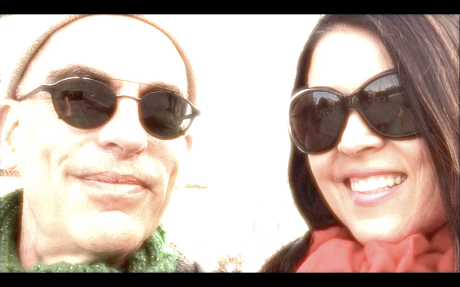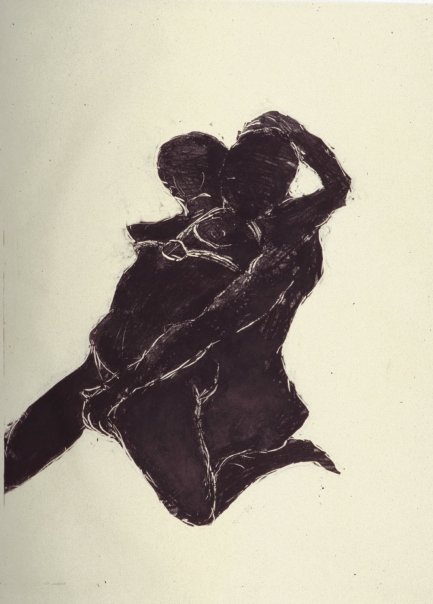 Seen through a jaundiced 21st Century lens I suppose we’d characterize the Van Gogh brand as Crazy. During a simpler, quainter time when I was studying painting in art school fancy words like ‘discourse,’ ‘dialectic’ and ‘disjunctive’ were bandied about as if their definitions were self-evident. Now the talk is all about marketing.
Seen through a jaundiced 21st Century lens I suppose we’d characterize the Van Gogh brand as Crazy. During a simpler, quainter time when I was studying painting in art school fancy words like ‘discourse,’ ‘dialectic’ and ‘disjunctive’ were bandied about as if their definitions were self-evident. Now the talk is all about marketing.
Maybe the professors are still filling disinterested ears with Laconian linguistics but the students, I can assure you, are just fidgeting with their i-phones.
That said, us oldsters have to keep up with the times and if that means maintaining an Instagram account then so be it. 
My dear friend and erstwhile lover Currado Malaspina has always, as the French say, “seen beyond the baguette.” In a very unassuming and innocent fashion he’s been cultivating his own brand for years. Now he’s ready to exploit it to its fullest effect.
So to Caravaggio’s Thug, Modigliani’s Tubercular, Pollock’s Alcoholic and Warhol’s Androgynic we can now add Currado Malaspina’s Priapic Olympiad!
My sister Hope knows all about this stuff. You might say she’s a full-time branding self improver. Her library at home is stacked with books on how to distinguish oneself and get ahead. Leaders Eat Last shares a long, sagging shelf with Principles of Corporate Governance, Executive Power Moves, Time Management for Dummies and Perfect Mindset for Team Motivators.
Why waste valuable time with Proust when you can learn all about the habits of highly effective people between the glossy soft covers of a remaindered trade paperback?
I’m not exactly sure what Hope does for a living but I can tell she really loves it. She gets so animated whenever she recounts some tawdry tale of inter-office intrigue that I truly believe it has a weird erotic effect upon her. She works for a mid-sized corporation whose interpersonal ecosystem has the same sort of social suffocation of a small provincial college. As a result there is never any shortage of fodder for petty, political machination and drama.
 Our immigrant parents were world-class lunatics who considered praise an unseemly form of extravagance. I think that’s why Hope is so drawn to the corporate structure of reward and affirmation. Being a manager is very gratifying to her and I know it means a lot when she receives encouraging compliments form her boss and from her peers.
Our immigrant parents were world-class lunatics who considered praise an unseemly form of extravagance. I think that’s why Hope is so drawn to the corporate structure of reward and affirmation. Being a manager is very gratifying to her and I know it means a lot when she receives encouraging compliments form her boss and from her peers.
It’s funny because we had the same exact childhood but I guess some people are perpetually triggered by the misadventures of their imperfect past.
Anyway, Currado has met my sister several times and though he finds her insufferably boring he’s at the same time quite taken by her desperate need to fit in and belong. He claims that this fetish to conform is a uniquely American phenomenon but any close reading of European history would strongly argue otherwise.
But Currado being Currado, Hope’s hopeful hopelessness has given him what he thinks will be a million dollar idea. Using my sister as a microcosm of an entire continent’s Calvinist restraint, he’s certain that an urgent craving for pleasure and lassitude lies nascent beneath the surface. Recognizing that there’s a puritanical allergy toward spontaneity he’s devised a codified template to address what he sees as a national spiritual malaise
And so began Currado’s now famous 10 Habits of Extremely Contented and Well-Cultivated People. Focusing on the California model of naive optimism and maximalist aspiration, his gimmick is the promise of happiness through rote. Follow his breezy, uncomplicated steps and you too can enjoy life like a Parisian!
 It’s as absurd as it is successful but rather than take my word for it, judge for yourself. What follows, in short form, are his 10 sequential conditions for bliss, legitimized by the imprimatur of notable and respected celebrities:
It’s as absurd as it is successful but rather than take my word for it, judge for yourself. What follows, in short form, are his 10 sequential conditions for bliss, legitimized by the imprimatur of notable and respected celebrities:
- Eat well and in heathy moderation. (Gerard Depardieu)
- Spend time with friends and cultivate the art of argument and conversation. (Orestia Shestov)
- Dolce Far Niente. (Albert Camus)
- Enjoy sex. (Serge Gainsbourg)
- Drink 0.40 liters of wine a day. (James Mayer Rothschild)
- Read fiction and attend the theatre regularly. (Micah Carpentier)
- Pursue sex. (Philippe Soupault)
- Be honest – there’s less to remember. (Mark Twain)
- Laugh as much as possible. (Valéry Giscard d’Estaing)
- Develop a talent for sexual intimacy. (Henry Miller)
Yes, I know it’s stupid and I know it’s a gimmick but I honestly think that Currado is on to something. Americans are addicted to lists. They also easily defer to what they think are experts. In their obedience they will undoubtedly follow his manifesto and just like all good citizens, when they fail they will only blame themselves.
What could be a better brand than blind obeisance?!



























